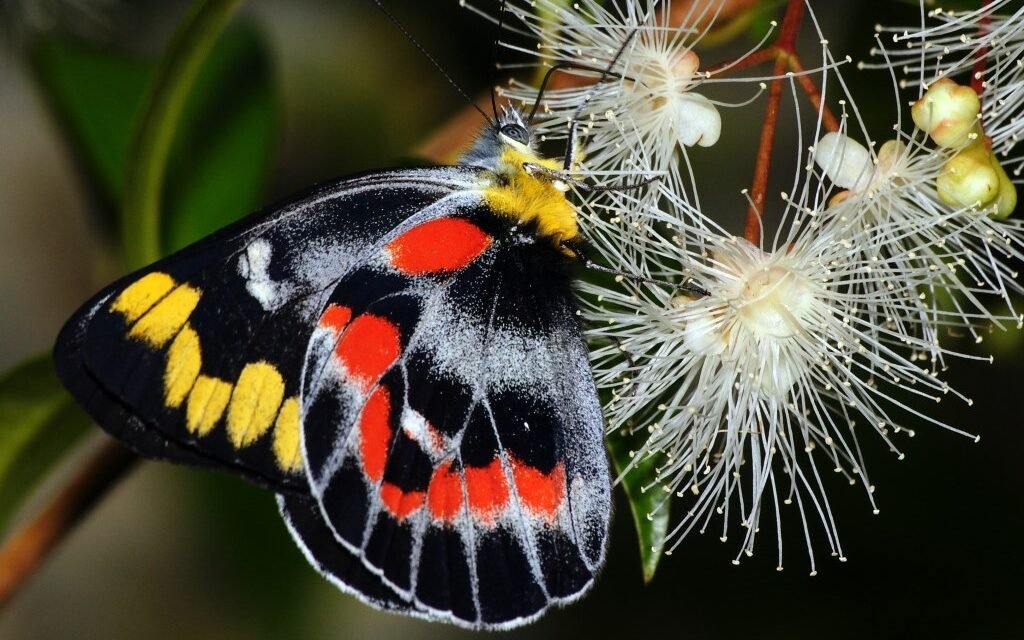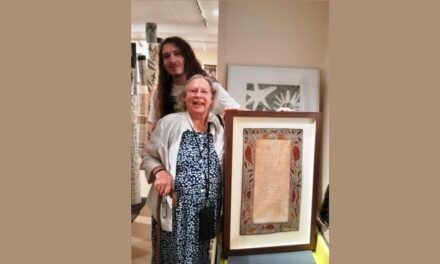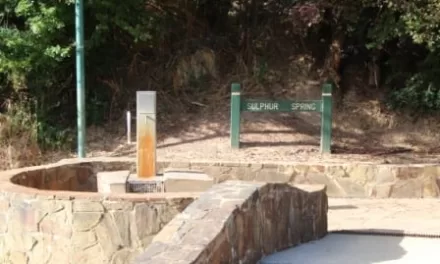Tanya Loos
This year I have been delighted to see up to four Imperial Jezebel butterflies visiting our garden! These large and graceful butterflies are white and edged in black and grey when their wings are open and flat. When they alight on a flower to feed, their wings are held together and upright, and you can see their long black clubbed antennae, cute furry yellow body and wings with a striking chequered pattern of bright red, yellow, white and black.
I have spotted a few of these butterflies here and there in previous years but this is the first time I have seen them in such numbers and sticking around for so long.
Everyone has been talking about this summer’s huge numbers of Cabbage White Butterflies, an introduced species that feeds mainly on introduced plants from the Brassica family. The mild winter, and very wet, early summer led to the Cabbage Butterfly boom, and may also be the reason for an increase in numbers of other species.
Imperial Jezebels (Delia harpalyce) are very much a native species. The young feed on mistletoe plants which parasitise mainly eucalypts. The word “parasite” has such negative connotations. However, mistletoe plants are an essential part of our forests – their leaves are chock full of nutrients and their dense ball shape a perfect home for animals as varied as spiders, small birds and possums. Mistletoe flowers are a source of nectar for butterflies and birds, and their berries are eaten by possums and of course Mistletoebirds. Mistletoebirds are tiny black, white and red birds that feed on the sticky fruit then “plant” new mistletoe by wiping their rear end on a branch to remove the very sticky seed!
Imperial Jezebels lay their bright yellow eggs on the leaves of mistletoes. The young caterpillars munch their way into a larger fat caterpillar stage which is quite hairy and resembles sawfly or spitfire larvae. When it is time to pupate, the caterpillars build a dense web and shelter in the web until emergence. What a sight that would be – to see the new adults emerging simultaneously!
Usually Imperial Jezebels are high in the canopy and a bit harder to see but they love some of our exotic garden plants and may come down to eye level to feed on nectar. We have one of those red leaved shrubs with white flowers, likely Abelia grandiflora, and the butterflies, including Imperial Jezebels just love the tubular flowers!
For a cool activity on these hot days – a colouring in activity for the young or young at heart: https://www.bushheritage.org.au/getmedia/830e4b14-7bae-44d7-b99f-7a424fd2f278/I-imperial-butterfly
Tanya Loos is a local naturalist, author and environmental consultant who loves to work in the environmental not-for-profit sector. She is the author of “Daylesford Nature Diary” available from her website or from Paradise Books in Vincent Street, Daylesford.
Have you got any nature questions for Tanya? Send them in!














